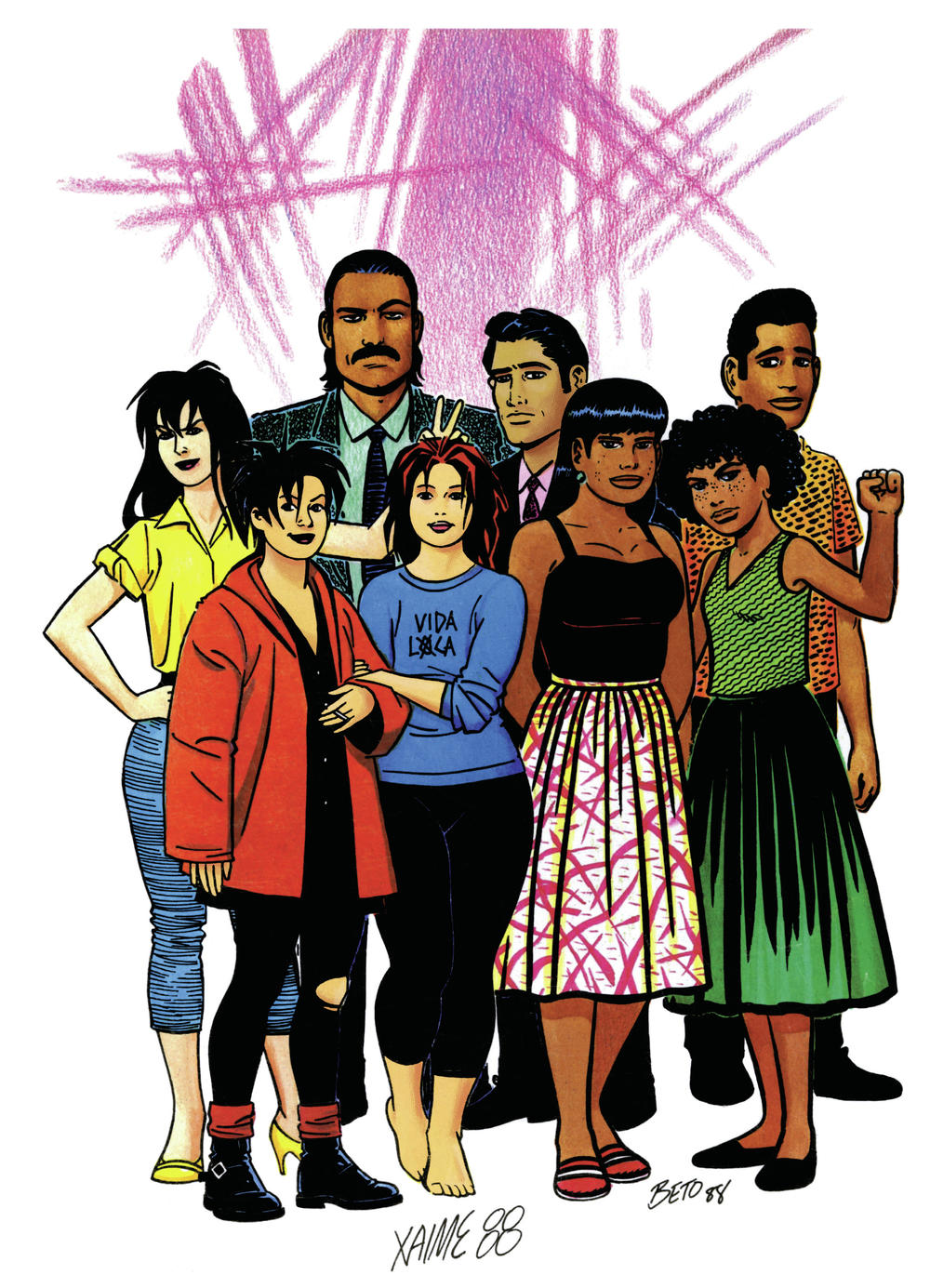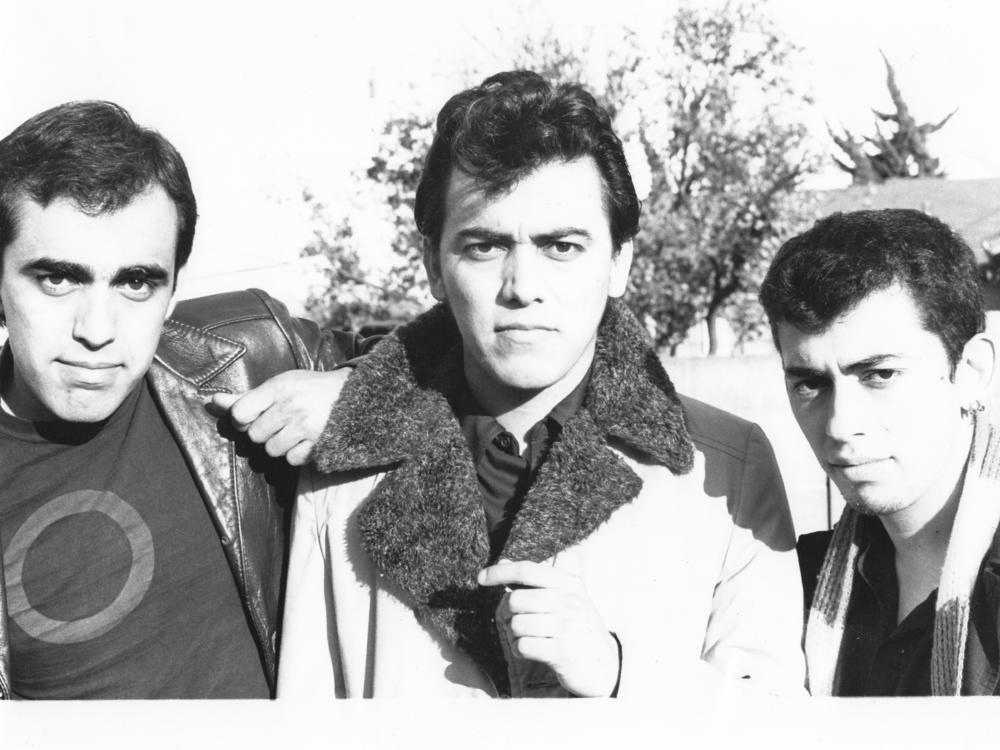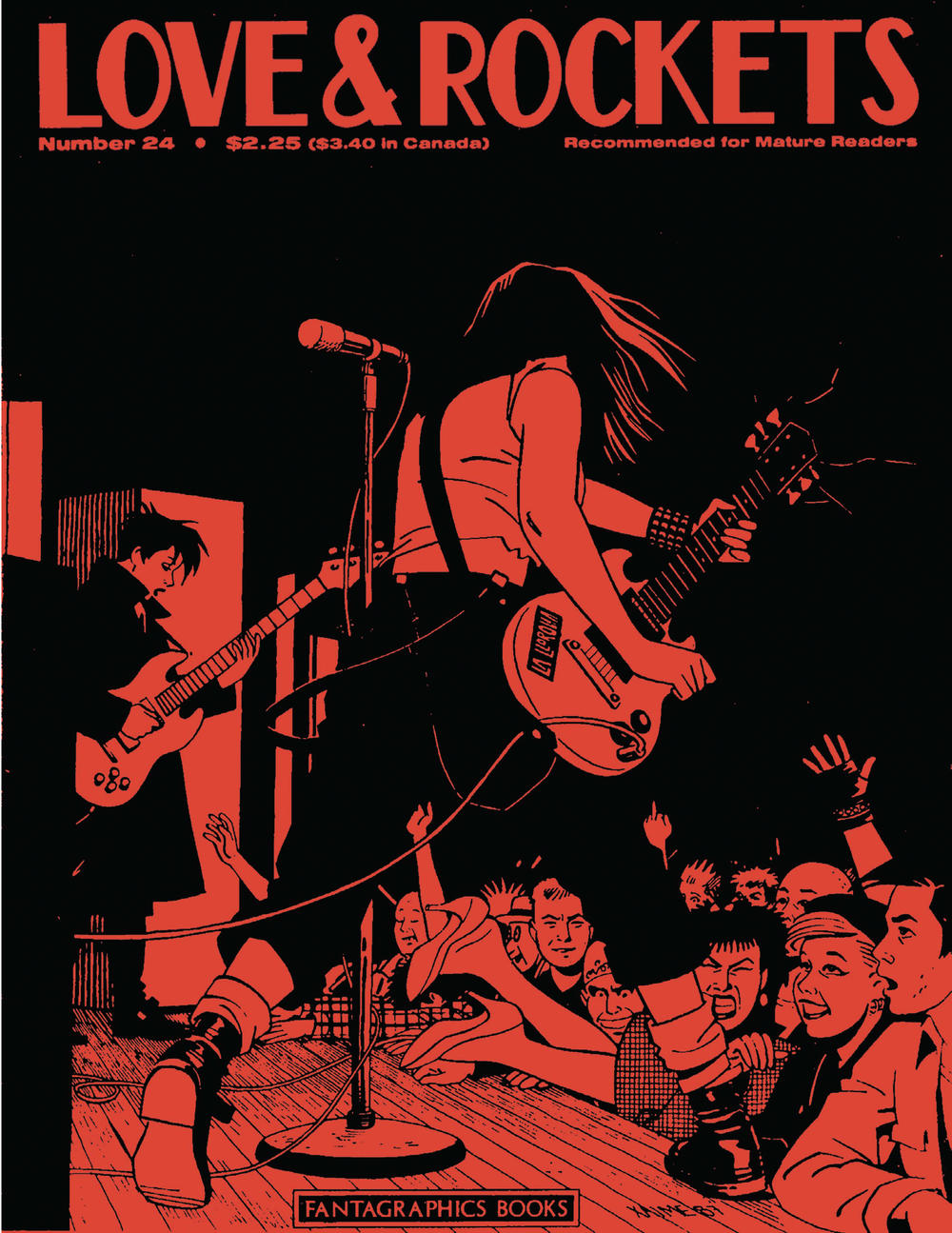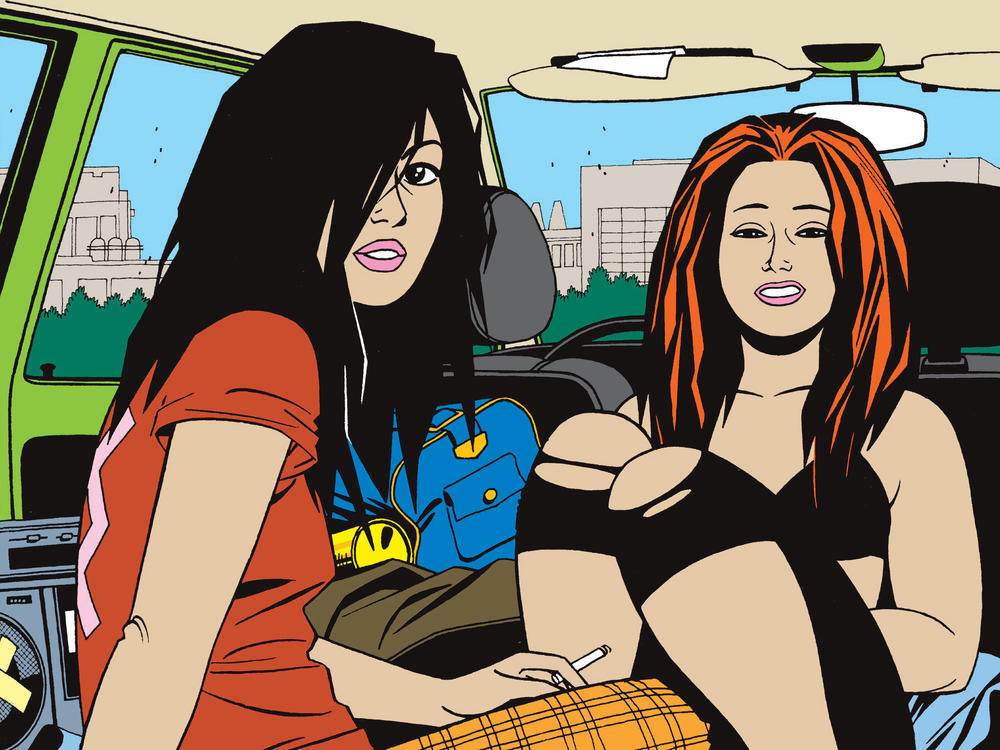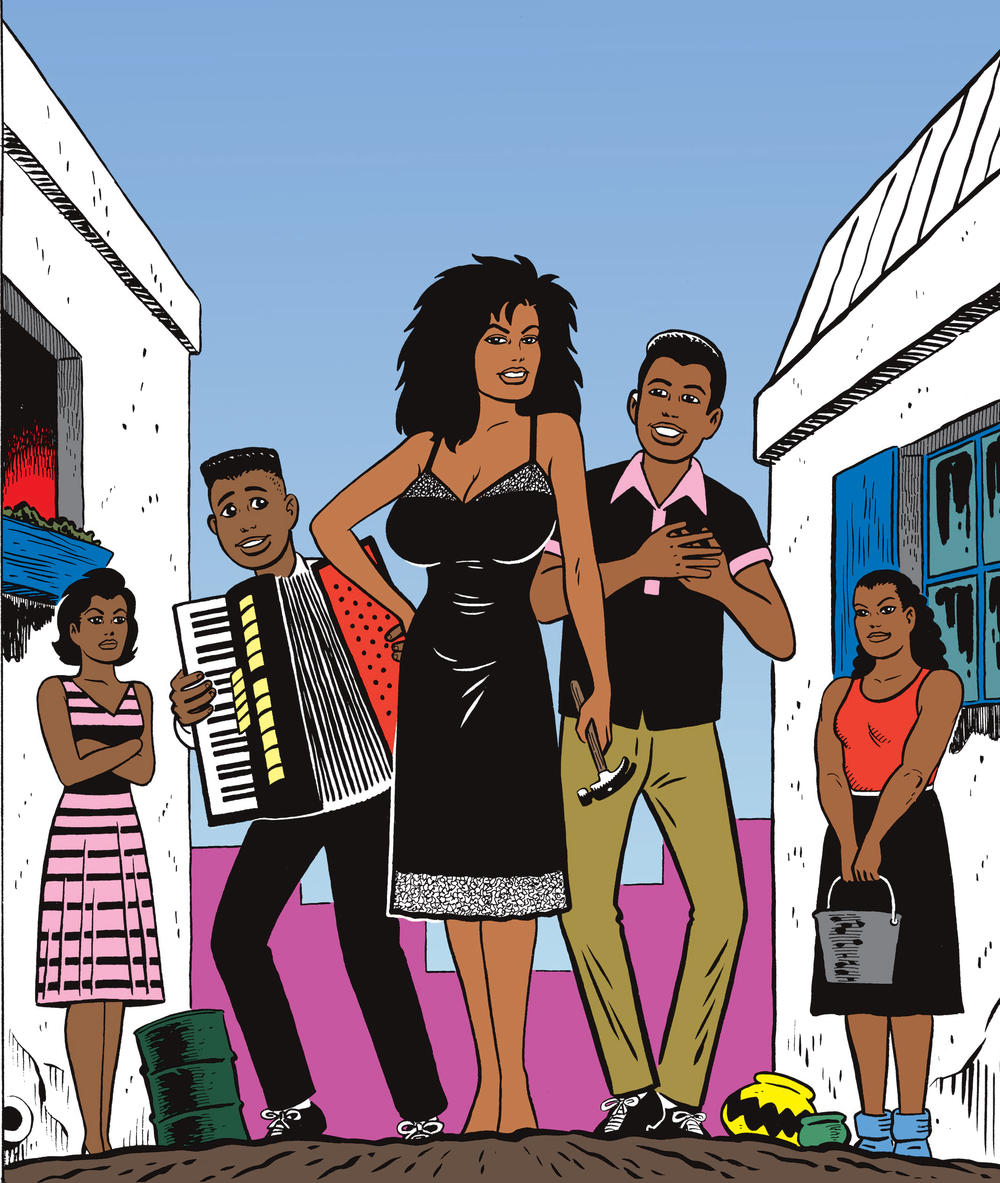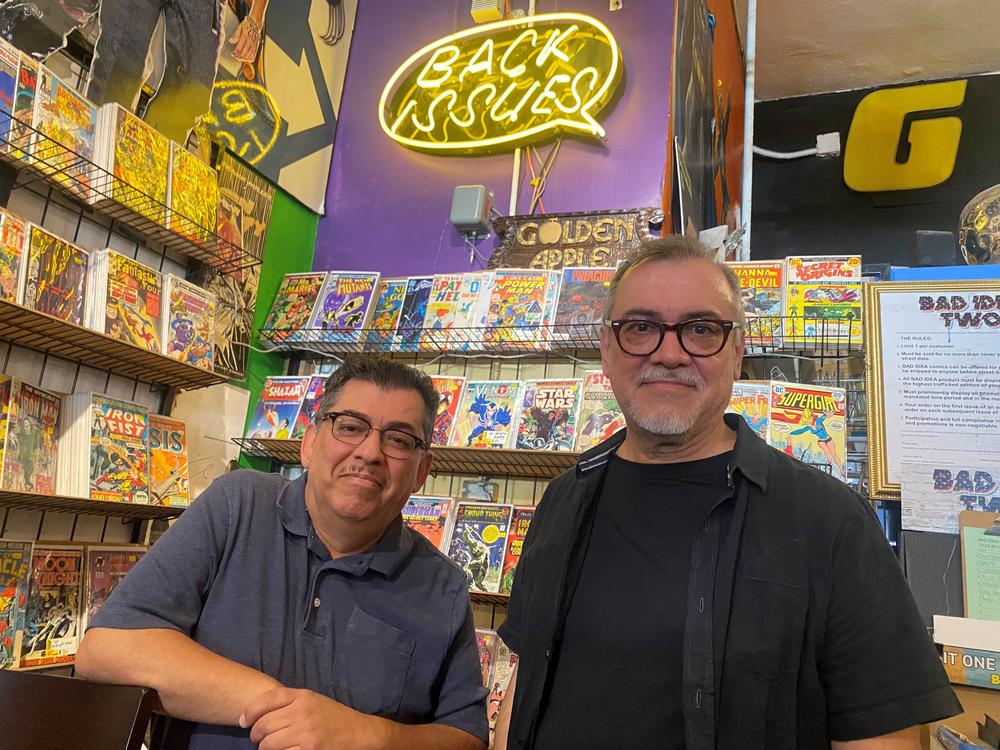Section Branding
Header Content
'Love and Rockets' celebrates 40 years of edgy, Latinx, alternative comics
Primary Content
Artists Jaime and Gilbert Hernandez have been drawing and writing their popular comic book series Love and Rockets since 1982. They've followed the lives of their mostly Latina characters as they grow from restless teens to middle-aged women. To celebrate the 40th anniversary, their loyal publisher Fantagraphics has a new box collection of their classics.
The Hernandez brothers grew up in a small Southern California town similar to the fictional community Hoppers, where their characters Maggie and her friends live. Oxnard, California was thousands of miles away from the New York and British punk music the brothers listened to as teens in the late 1970s.
"For us, it just seemed new and fresh," Gilbert says of their favorite bands, the Ramones, Sex Pistols and The Clash. "Rock was revitalized, youth culture was revitalized. You know, we weren't these just nobody guys in a small town, we were always alert about what the bigger world was. And that kind of opened up for us because it was a D.I.Y. thing."
With that same do-it-yourself, renegade punk spirit, the brothers played in local bands and began drawing their own alternative comics. Their older brother, Mario, was their partner at the beginning when they self-published. Jaime says they were inspired by what he jokingly calls their "love of junk culture: old science fiction movies, wrestling, crummy TV shows, crummy comics."
"It was just the stuff we like to draw, and we thought it was it cool because people started to tell us that it wasn't cool," he says. "And if you're going to tell us that ain't cool, then we're going to do it more. We were cocky and confident enough that we knew what we liked was good, and our comic was going to show you why."
"Los Bros Hernandez," as they're also known, recently reminisced while visiting Golden Apple Comics, the beloved L.A. indie shop filled with the kinds of comic books they grew up with: everything from underground comix to Marvel and DC superheroes to Dennis the Menace to The Archies. Jaime says he was drawn to The Archies in particular for its fashion and rock band that reflects the pop culture of its times. He says Betty and Veronica and his friends inspired him to create his main character Maggie and her friends as 1980s punk teens.
"When we were in the punk scene, a lot of the young women were very spirited and very alive. And I just loved that about them," he says. "And I thought, 'my characters better dress, right? Or the real punks will make fun of them.'"
For Love and Rockets, Jaime says he threw in everything he loved: rockets, robots, horror and punk. He first made Maggie a rocket mechanic wearing 1940s clothes and living in a science fiction world. Then she became a 1980s punk teen, with friends like Hopey, her occasional lover.
"The punk girls were hanging out together and smoking cigarettes and getting drunk and stuff," he says. "Anybody can go to outer space in comics, you know. But if I can make these girls bored out of their heads because they live in a small town and make that interesting, then, boy, I'm a good artist."
Meanwhile, Jaime's older brother Gilbert wrote and drew parallel stories about a fictional Latin American village called Palomar. His storyline follows Luba and her family as they immigrate to California.
"I wanted something with some weight, something with substance," he says. "That was a challenge just to get people to read it. And luckily it was enough people to get it to keep us going for 40 years."
Over the years, they focused on their women characters' interpersonal dramas, their love lives and their neighborhoods.
"It might have been that we were raised by our mom and her grandmother, and our mom had a bunch of sisters," says Gilbert. "We saw the world through women's eyes."
Gilbert says it was important that, unlike The Archies, the Love and Rockets characters matured into middle age '"cause it just seemed weird for them to be the same age all the time."
In a recent PBS SoCal documentary about Love and Rockets, fans testified about what they say are honest portrayals of Latinx and queer characters dealing with love, loss, death and aging.
"They start having a conversation about menopause, who's getting their periods, who isn't getting their periods," says L.A. Times journalist Carolina Miranda. "It feels so real because what kinds of conversations are women this age having? They're talking about their bodies. This is a surprising thing to see in a comic, especially one written by men. Menopause is not something that's talked about very much. And it's the sort of thing that really makes me appreciate Love and Rockets."
Golden Apple Comics owner Ryan Liebowitz says the Hernandez brothers have die-hard fans since day one, and newer generations too. "Love and Rockets just hits home for people who basically don't like capes and superheroes and want to read stories about kind of real people doing real things."
Forty years later, Jaime and Gilbert Hernandez say they have no plans to stop drawing Love and Rockets. "We're trying to catch up to Charles Schulz and then we'll retire," Jaime jokes. "He continued drawing just short of 50 years."
Copyright 2022 NPR. To see more, visit https://www.npr.org.
Bottom Content

